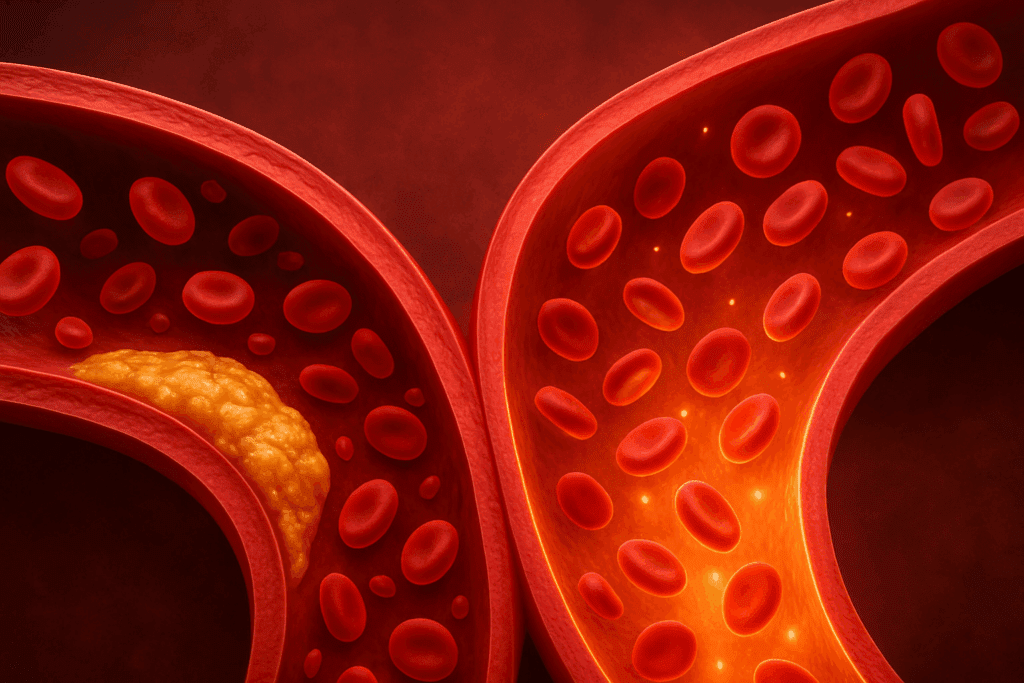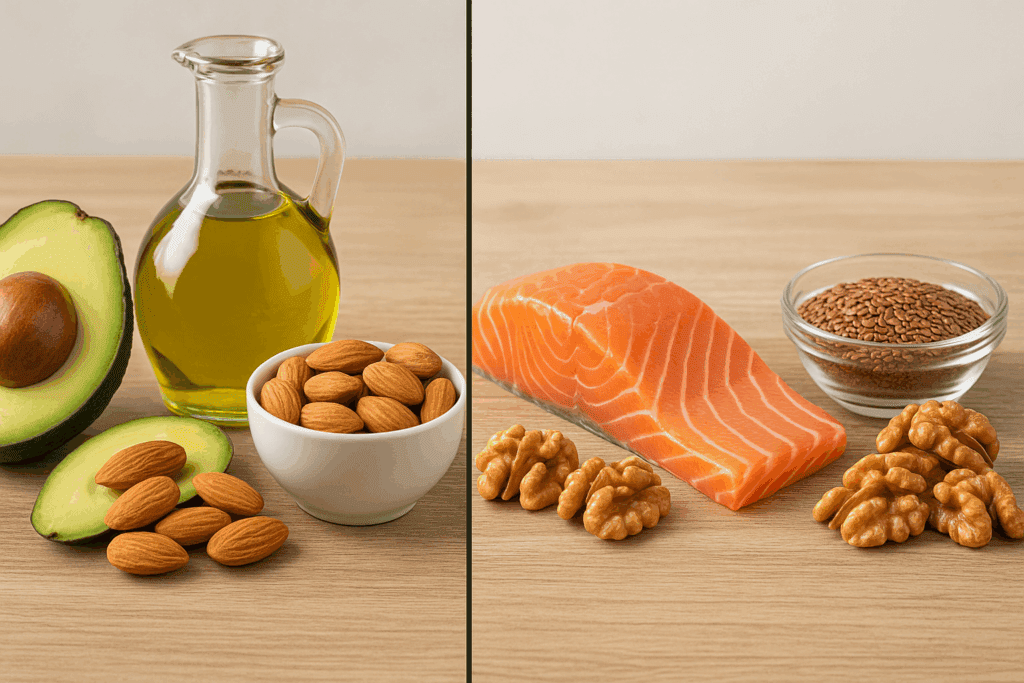Why the Type of Fat You Eat Matters More Than You Think
The debate over saturated vs unsaturated fat has been ongoing for decades, and its implications for public health are profound. While many people associate all fats with weight gain or poor cardiovascular health, emerging science has made it increasingly clear that fat itself is not the enemy—rather, the type of fat we consume plays a pivotal role in determining health outcomes. Understanding the difference between saturated and unsaturated fats is essential for anyone looking to make smarter, heart-healthy dietary decisions.
Fats are essential nutrients that support energy production, hormone regulation, cell structure, and vitamin absorption. But not all fats function the same way in the body. The key lies in the chemical structure of saturated and unsaturated fatty acids. Saturated fats have no double bonds between carbon atoms, allowing them to pack tightly and remain solid at room temperature. In contrast, unsaturated fats contain one or more double bonds, making them more fluid and typically healthier. This chemical difference may seem minor, but it significantly impacts how these fats behave in your body and influence your long-term health.
You may also like: Macronutrients vs Micronutrients: What the Simple Definition of Macronutrients Reveals About Your Diet and Health

Decoding the Differences Between Saturated and Unsaturated Fats
The distinction between saturated vs unsaturated fatty acids begins at the molecular level. Saturated fats are straight in structure and solidify at room temperature, which explains their presence in butter, cheese, red meat, and processed baked goods. Unsaturated fats, on the other hand, are kinked in structure due to their double bonds, which keeps them liquid. This makes them ideal for oils like olive oil, sunflower oil, and flaxseed oil.
The health implications of these structural differences are well-documented. Saturated fats have been shown to raise low-density lipoprotein (LDL) cholesterol, often dubbed “bad cholesterol,” which can contribute to atherosclerosis and heart disease. In contrast, unsaturated lipids—especially polyunsaturated fats—can lower LDL cholesterol and raise high-density lipoprotein (HDL), or “good cholesterol.” This explains why dietary guidelines worldwide recommend limiting saturated fats and replacing them with unsaturated alternatives when possible.

What Are Unsaturated Fats and Why Are They Considered Healthy?
The unsaturated fat definition hinges on the presence of one or more double bonds in the fatty acid chain. These fats are subdivided into monounsaturated and polyunsaturated fats. Foods rich in monounsaturated fats include olive oil, avocados, and almonds, while polyunsaturated fat examples include walnuts, chia seeds, flaxseeds, and fatty fish such as salmon and sardines.
Polyunsaturated fats are particularly beneficial because they contain omega-3 and omega-6 fatty acids, which are essential for brain function, cell growth, and inflammation regulation. These nutrients are crucial, especially because the body cannot produce them on its own. Including more polyunsaturated fat foods in the diet has been associated with a lower risk of heart disease, stroke, and certain chronic inflammatory conditions. Knowing what is the food source of unsaturated fat—such as seeds, nuts, fish, and plant oils—can help improve diet quality and long-term health.
Saturated Fats: Should They Always Be Avoided?
While unsaturated fats are generally preferred for heart health, the vilification of saturated fats is now viewed with more nuance. Not all saturated fats have the same health impact. For example, the saturated fat found in coconut oil or dark chocolate may affect cholesterol differently than the saturated fats in processed meats. Some full-fat dairy products, like yogurt and cheese, may offer benefits due to their probiotic content, calcium levels, and unique fatty acid profiles.
Still, the overall consensus remains that saturated fats should be consumed in moderation. Understanding the difference between saturated and unsaturated fats—and how they function in different food matrices—helps consumers avoid overly simplistic dietary rules. The key is to minimize intake from ultra-processed sources and instead focus on whole foods with naturally occurring fats.

Understanding the Science: Saturated vs Unsaturated Fatty Acids in the Body
Biochemically, saturated and unsaturated fatty acids interact with the body in dramatically different ways. Saturated fatty acids can increase the expression of genes involved in cholesterol synthesis, raising LDL levels in the bloodstream. This contributes to plaque formation in the arteries over time. In contrast, unsaturated fatty acids help regulate lipid metabolism, reduce systemic inflammation, and improve insulin sensitivity.
The structure of unsaturated fatty acids makes them less likely to form harmful deposits in arteries. This helps explain why diets high in unsaturated fats are associated with lower incidences of heart disease and type 2 diabetes. Furthermore, unsaturated fatty acid structure plays a key role in cell membrane flexibility and signaling pathways, affecting everything from cardiovascular health to brain function.

Practical Food Choices: Examples of Saturated and Unsaturated Fats
When it comes to making smart food choices, understanding real-world examples of unsaturated, saturated, and trans fats is critical. Unsaturated fat examples include extra virgin olive oil, walnuts, flaxseed, sunflower oil, and fatty fish. These foods are high in heart-healthy monounsaturated and polyunsaturated fats.
Saturated fats are commonly found in butter, lard, fatty cuts of meat, whole milk, and processed baked goods. While not all of these foods must be completely avoided, they should be consumed with mindfulness and in balance with healthier fat options.
Trans fats, found in partially hydrogenated oils and once common in processed snack foods, have been largely banned or phased out due to their high risk to cardiovascular health. When comparing an example of unsaturated, saturated, and trans fats, think olive oil (unsaturated), butter (saturated), and old-style margarine (trans). Recognizing these differences helps consumers make informed dietary decisions.

Polyunsaturated vs Monounsaturated Fats: Do the Differences Matter?
Both monounsaturated and polyunsaturated fats are good for you, but they offer slightly different benefits. Monounsaturated fats are particularly effective at reducing LDL cholesterol and improving blood sugar control. Foods like avocados, olives, and peanuts are excellent sources.
Polyunsaturated fats go a step further by reducing inflammation and supporting cognitive and cardiovascular function. These include omega-3 fatty acids from fish and omega-6 fatty acids from seeds and vegetable oils. When discussing polyunsaturated fats vs monounsaturated fats, it’s not about choosing one over the other—it’s about incorporating both for a more comprehensive nutritional profile.
Debunking Myths: Are Unsaturated Fats Always Better Than Saturated?
The saturated vs unsaturated fat conversation often suffers from oversimplification. While it’s clear that replacing saturated fats with unsaturated fats can improve heart health, it doesn’t mean all saturated fats are inherently bad. Context matters. A diet centered around whole, minimally processed foods with a variety of healthy fats is far more impactful than simply focusing on reducing saturated fat.
So, which is better for you—unsaturated or saturated? The answer lies in the overall dietary pattern. Saturated fats should be limited, but not necessarily eliminated, especially when they come from nutrient-rich foods. Unsaturated fats, particularly from plant-based sources, should be emphasized due to their well-established benefits.
What the Research Says About Long-Term Health and Fat Consumption
The scientific consensus is clear: diets higher in unsaturated fats and lower in saturated fats are associated with better health outcomes. This includes reduced risk of cardiovascular disease, better lipid profiles, improved insulin sensitivity, and even enhanced cognitive function. Numerous large-scale studies and meta-analyses support the idea that replacing saturated fat with unsaturated fat—especially polyunsaturated fat—reduces disease risk.
Moreover, understanding saturated vs unsaturated lipids is essential for evaluating food labels, interpreting nutrition claims, and making conscious decisions at the grocery store. Consumers armed with this knowledge are less likely to fall for misleading marketing and more likely to build sustainable, evidence-based eating habits.
Real-World Tips for Choosing Unsaturated Fat Foods Every Day
Implementing dietary changes doesn’t have to be overwhelming. A few simple substitutions can go a long way. Replace butter with olive oil when sautéing vegetables. Choose salmon or mackerel over red meat for your protein. Snack on almonds or walnuts instead of chips. Use avocado as a spread instead of mayonnaise. Each of these decisions incorporates more unsaturated fat into your diet while reducing reliance on saturated fat.
Understanding unsaturated fatty acids in foods empowers consumers to make choices that support metabolic, cardiovascular, and cognitive health. Awareness of food quality, sourcing, and preparation methods further enhances the impact of these choices.
Frequently Asked Questions: Saturated vs Unsaturated Fats
1. How do cooking methods affect the stability of saturated vs unsaturated fats?
Cooking methods can significantly impact the stability and health effects of both saturated and unsaturated fats. Saturated fats are more stable at high heat due to their lack of double bonds, making them suitable for frying or baking. In contrast, unsaturated lipids, especially polyunsaturated fats, can oxidize when exposed to high temperatures, potentially forming harmful compounds. This makes it important to use unsaturated fat foods like olive oil for low to medium heat cooking and reserve saturated fat sparingly for high-heat applications. Understanding how saturated vs unsaturated fatty acids react to heat can help minimize the degradation of beneficial nutrients during meal prep.
2. Can the type of fat influence mental health or cognitive function?
Emerging research suggests a connection between unsaturated fatty acids and mental health, particularly in relation to mood and cognition. Polyunsaturated fat examples like omega-3 fatty acids—found in walnuts, flaxseeds, and fatty fish—are essential for brain structure and neurotransmitter function. Diets rich in unsaturated fat have been linked with a reduced risk of depression, improved memory, and even slower cognitive decline. While saturated and unsaturated fats both play roles in neural tissue, an imbalance skewed toward saturated fats may be associated with increased inflammation and neurological aging. This growing field highlights the nuanced difference between saturated and unsaturated fats beyond cardiovascular health.
3. Are there any population groups that benefit from slightly higher saturated fat intake?
While current guidelines favor unsaturated fat, some studies indicate that specific populations, such as highly active individuals or those with particular genetic lipid metabolism traits, may tolerate or even benefit from moderate saturated fat intake. For example, athletes with high energy expenditure might process saturated fat more efficiently when paired with unprocessed whole food sources. However, these cases do not negate the broader public health consensus favoring unsaturated fat foods. When evaluating the difference between saturated fat and unsaturated fat in a clinical setting, personalized nutrition plays a growing role.
4. How does fat source quality impact the sat fat vs unsat fat debate?
Quality matters as much as quantity when comparing saturated and unsaturated fats. Processed foods often contain low-quality saturated fats and damaged unsaturated lipids, which can negatively impact health regardless of fat type. Whole foods like grass-fed beef or wild salmon provide not only saturated and unsaturated fats but also valuable micronutrients and antioxidants. Thus, the saturated vs unsaturated fat discussion should always consider food context. Choosing high-quality sources ensures that both types of fats contribute positively to your overall diet.
5. What role do fats play in satiety and weight management?
Fats—especially unsaturated fats—contribute to satiety and can reduce overall calorie intake when included mindfully. Unsaturated fat examples such as avocado, nuts, and seeds help regulate hunger hormones like leptin and ghrelin. This can aid in long-term weight control, as frequent hunger spikes are minimized. Comparing saturated vs unsaturated lipids, studies often show that diets higher in unsaturated fats lead to more favorable body composition outcomes than those high in saturated fat. Incorporating unsaturated fatty acid in foods into a balanced diet may help manage cravings and reduce the risk of overeating.
6. How do different cultures approach saturated and unsaturated fats in their traditional diets?
Globally, dietary fat consumption varies significantly, offering unique insights into the saturated vs unsaturated conversation. The Mediterranean diet, rich in unsaturated fat foods like olive oil and nuts, is associated with low rates of heart disease. Meanwhile, traditional Japanese diets rely more on omega-3-rich polyunsaturated fat foods like fish and seaweed. On the other hand, some indigenous diets historically high in saturated fat from animal sources show low cardiovascular risk, likely due to the absence of processed foods and active lifestyles. Exploring these diverse models helps clarify the saturated and unsaturated fats discussion by emphasizing overall diet quality and lifestyle.
7. What are some underrated unsaturated fat foods that people often overlook?
While avocados and olive oil are well-known, many people overlook unsaturated fat foods like tahini (sesame seed paste), hemp seeds, and canola oil. These contain both monounsaturated and polyunsaturated fatty acids and offer versatility in cooking. Tahini, for example, provides unsaturated fatty acid structure benefits along with minerals like calcium and magnesium. Including such foods expands dietary diversity and strengthens the case for unsaturated fats over saturated fats. Discovering lesser-known unsaturated fatty acids examples can help prevent dietary monotony while enhancing nutrition.
8. Is it possible to get too much of a good thing when it comes to unsaturated fat?
Although unsaturated fats are generally beneficial, consuming them in excess—especially polyunsaturated fats—can create imbalances. High levels of omega-6 fatty acids from processed vegetable oils may promote inflammation when not balanced with omega-3s. The ideal fat intake considers both the amount and the ratio of polyunsaturated fats vs monounsaturated fats. In the sat fat vs unsat fat equation, quantity still matters. Even the healthiest unsaturated lipids should be consumed within the framework of overall caloric needs and balanced macronutrient intake.
9. How can understanding fat chemistry guide better food label reading?
Awareness of saturated vs unsaturated fatty acids can make food label interpretation more meaningful. For example, a product high in total fat but low in saturated fat may still be healthy if it contains predominantly unsaturated fatty acids. Labels that list hydrogenated oils are red flags, as these often include trans fats, which are harmful. Comparing an example of unsaturated, saturated, and trans fats through food labels teaches consumers to make better choices. Recognizing the difference between saturated and unsaturated fats at the molecular level sharpens our understanding of nutrition facts panels and marketing claims.
10. What future innovations are shaping the saturated vs unsaturated fat landscape?
The food industry is exploring innovative ways to enhance the quality of fats in processed products, such as using algae-based oils rich in omega-3s or engineered plant oils with an optimized unsaturated fatty acid profile. These developments aim to improve health outcomes while maintaining flavor and shelf stability. As science continues to explore what is the difference between saturated and unsaturated fatty acids in terms of functional food applications, expect to see novel unsaturated fat examples emerge in mainstream products. With consumer demand for healthier fats growing, the future of dietary fat innovation is increasingly centered around sustainable, plant-based, unsaturated lipids that support both individual and planetary health.
Making Smart Choices: Final Thoughts on Saturated and Unsaturated Fats for a Healthier Diet
In the ongoing debate of saturated vs unsaturated fat, the verdict from nutrition science is increasingly clear. Unsaturated fats—especially those from whole, plant-based sources—offer broad, measurable benefits for heart health, inflammation control, metabolic balance, and overall wellness. While not all saturated fats are inherently harmful, their consumption should be moderated, particularly when they originate from processed or low-nutrient foods.
Understanding the difference between saturated and unsaturated fatty acids allows for informed, balanced eating that supports both prevention and longevity. When consumers know what is the food source of unsaturated fat, recognize unsaturated fat examples, and appreciate the nuanced differences between polyunsaturated vs monounsaturated fats, they are better equipped to build a diet that aligns with long-term health goals.
As dietary trends evolve and more research emerges, one principle remains grounded in evidence: it’s not about eliminating fat, but about choosing the right kinds. Prioritizing unsaturated fats over saturated ones, within a balanced and varied eating pattern, is a practical, proven strategy for promoting lasting health and reducing chronic disease risk.
Further Reading:
What’s the Difference Between Saturated and Unsaturated Fat?
Is saturated or unsaturated fat better for health?
Healthy Fats vs. Unhealthy Fats: What You Need to Know


